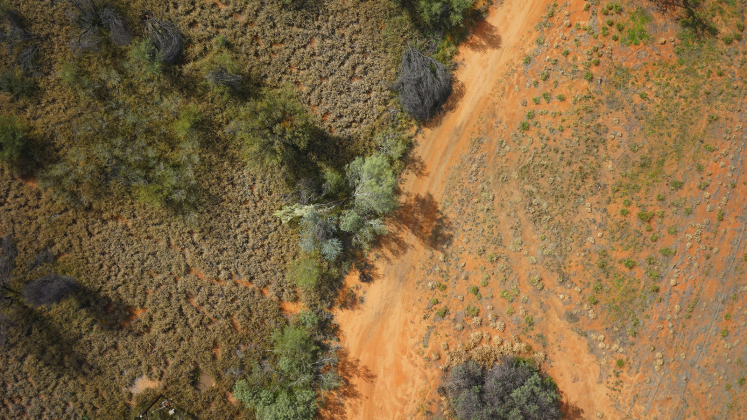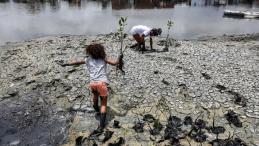Richmond Hill, Ontario, Canada - 28 Nov 2025: Harmful invasive plants cost the global economy billions of dollars annually by damaging agricultural farms and degrading natural landscapes requiring continuous efforts to contain their spread. While rules exist to contain them, the specific regulations have historically been difficult to access, buried within the disconnected lists of individual jurisdictions.
To bridge this gap, the United Nations University Institute for Water, Environment and Health (UNU-INWEH), in collaboration with researchers from the University of California, Davis, and international partners, has launched the Regulated Plants Database. This new open-access tool compiles the officially regulated and restricted invasive plants across Australia, New Zealand, Canada, and the United States.
"Accessible data is the cornerstone of effective environmental governance," said Prof. Kaveh Madani, Director of UNU-INWEH. "By breaking down silos and consolidating fragmented regulatory information into one open platform, we are empowering decision-makers and communities to act proactively. This tool ensures that critical information is no longer hidden behind bureaucratic barriers, but is instead freely available to protect our shared ecosystems."
The database is built to be user-friendly for regulators, land managers, researchers, farmers, nurseries, and the general public.
“This database allows regulators, farmers, land managers, and plant sellers to verify a species’ legal status before seeds or plant materials move into a new region,” said Philipp Robeck, a research fellow in ecological modeling and biodiversity at UNU-INWEH. “That early check helps prevent harmful plants from becoming established, reducing the risk of crop losses and protecting native biodiversity.”
How It Works
The Regulated Plants Database allows users to search for more than 1,800 legally restricted invasive plant species by common or scientific names and determine in which jurisdiction each is regulated. Additionally, interactive maps and comparison tables offered by the Database highlight how restrictions differ across regions.
The tool delivers critical benefits to specific user groups:
- For Agriculture: Farmers and agricultural agencies can identify potential threats to crops and livestock before they cross borders, preventing yield losses and reducing the heavy cost of weed management.
- For Biodiversity Mitigation: Conservationists and land managers can use the data to prevent the introduction of invasive species that outcompete native flora, disrupt local ecosystems, and degrade soil health.
- For Commerce: Nurseries and online plant sellers can ensure compliance with local laws, preventing the accidental sale of illegal species.
- For Policy Makers: Government officials can benchmark their regulations against neighboring jurisdictions to identify gaps, harmonize lists, and coordinate cross-border biosecurity strategies.
The Database currently compiles verified data from all states, provinces, and territories in the United States, Canada, Australia and New Zealand. To ensure reliability, species' names are standardized, duplicates are removed to maintain consistency across regions. Every record is sourced from official government lists and verified against recognized taxonomic references to ensure accuracy.
“Access to clear and consistent regulatory information reduces uncertainty and helps decision-makers focus resources where they are needed most,” said Dr. Mohsen Mesgaran, the Ecological Modeling and Food Security Lead at UNU-INWEH. “By standardizing data across jurisdictions, the database supports more efficient regulatory planning and reduces duplication of effort — and we are pleased that this contribution has already been recognized through the UNU Sustainability Nexus Analytics, Informatics, and Data (AID) Tools platform.”
Call for Contributions
The database is designed to grow. Over the next 18 months, the platform aims to expand its coverage to include the European Union, Latin America, and the Asia-Pacific region. To achieve this, UNU-INWEH is calling on the global scientific community for support.
"We invite scientists, policymakers, and subject matter experts to contribute to this central authoritative source," said Dr. Mir Matin, Manager of the Geospatial, Climate, and Infrastructure Analytics Programme at UNU-INWEH. "Expanding this database is a collective effort. By sharing data and insights, contributors help us build the world's most comprehensive reference on invasive plant regulations, ensuring that no region is left vulnerable due to a lack of information."
Interested contributors can share information via the website.
Media Contacts:
Kyra Bowman, UNU Head of Communications, bowman@unu.edu
Shooka Bidarian, Media and Journalism Fellow, Sustainability and Climate, shooka.bidarian@unu.edu
Available for Interview:
Dr. Mohsen Mesgaran - Lead, Ecological Modeling and Food Security, UNU-INWEH – mohsen.mesgaran@unu.edu
Philipp Robeck – Research Fellow, Ecological Modeling and Biodiversity – philipp.robeck@unu.edu
Dr. Mir Matin, Manager, Geospatial, Climate and Infrastructure Analytics Program – mir.matin@unu.edu




